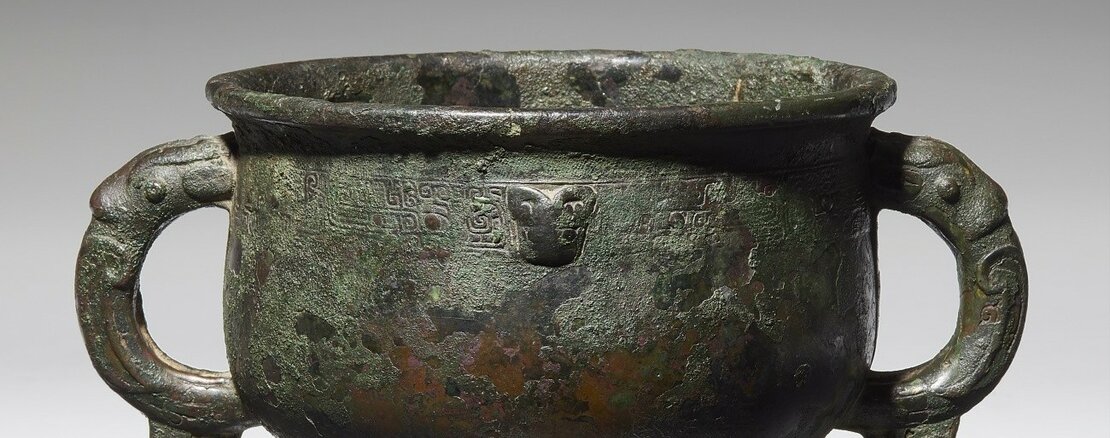The great potential of archaic Chinese bronzes
With a great result of 1.75 million, the Asian Art auction was especially strong in the areas of China and Tibet/Nepal, shaped by two German private collections: archaic Chinese bronzes from the outstanding collection of Gerda and Gottfried Hertel which sold exceptionally well with marked price increases, as well as the Gerda Sökeland Collection with important Tibetan thangkas and a fine selection of Tibetan and Nepalese sculptures. The offer of Japanese art was enriched by a collection of Japanese inrô from a German lady ...

As the Gerda and Gottfried Collection of important archaic Chinese bronzes was called for sale, there was no stopping it: the prices shot up one after another, far above their estimates – and the collection was completely sold. Alongside written bids and bidders in the room, the numerous international telephone bidders were particularly active, all persistently bidding against each other (lots 329 – 343).
The highlight was a gui-type food vessel from the early Zhou dynasty, 12th/10th century B.C. The 15 cm high and 29 cm wide bronze vessel was pushed from the estimate of €5/7,000 by the Chinese American trade to sell for €211,000 (lot 330). The same bidder also secured a yan-type food offering vessel from the Western Zhou dynasty (11th century to 771 B.C.) for €87,000 (lot 334, €4/6,000), as well as two small bronze drinking vessel of type zhi from the early Western Zhou dynasty, around 11/10 B.C., for €68,000 (lot 332, € 600/800). A further bronze food vessel of gui type was also acquired by this bidder for € 52,000 (lot 332, €4/6,000).
The enormous success of the collection and a further ritual vessel of ding type from a private collection from the Western Zhou dynasty which sold for € 56,000 (lot 344, €9/12,000) impressively confirm the trend which has been observed at Lempertz for some time: the very successful sale of archaic bronzes in recent auctionsagainst the background of internally rising demand.
Further top results included an 80 cm high blue and white lidded baluster vase from the Kangxi period which sold for € 27,000 (lot 413, €6/10,000) and the 67.5 cm guardian figure (vajrapani) from the 17th/18th century which has now moved to Spain for € 40,000 (lot 327, €25/30,000).
Shining out from the successful sale of the Tibetan and Nepalese works of art was the enormous increase of a rare figure of a crowned buddha from Kashmir or Western Tibet from the 9th/10th century with as many as 17 international telephones fighting for the 22.3 cm high figure. Acquired in the 1980s in Tibet, the figure saw a tremendous rise from €10/15,000 to €149,000, for which a Swiss collector made the investment (lot 315).
A further high point was the strong offer of important thangkas. This area has already exhibited growing interest in past auctions and was confirmed this season by the complete sale of the Gerda Sökeland Collection (lots 305 – 324), highlighted by a black-ground thangka from the 17th century for €13,500 (lot 305, €10/15,000).
Japan
Alongside high-value lacquer works, a noteworthy selection of netsuke of traditionally high quality and quantity were offered, one highlight of which was a Sansukumi, worked in around 1880, which sold for €7,500 (lot 228, €4/6,000). The majority of the market-fresh pieces were from a Hamburg private collection. In addition, 22 inrô were from the collection of a German lady, gathered together from the early 1970s up till 2002 and with particular focus on quality, condition and complete ensembles (lots 111 – 132). One of the top lots was a signed inrô from the 19th century which sold for €6,700 (lot 122, €3/4,000).
